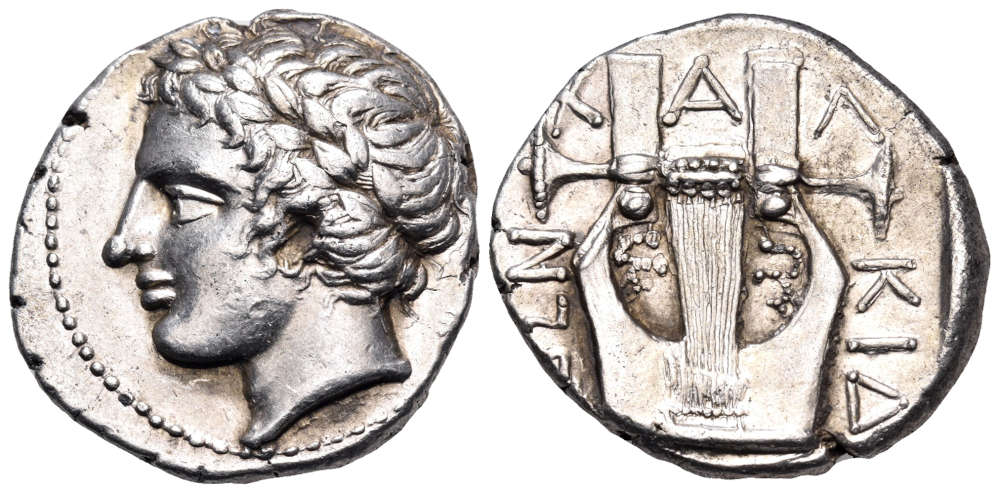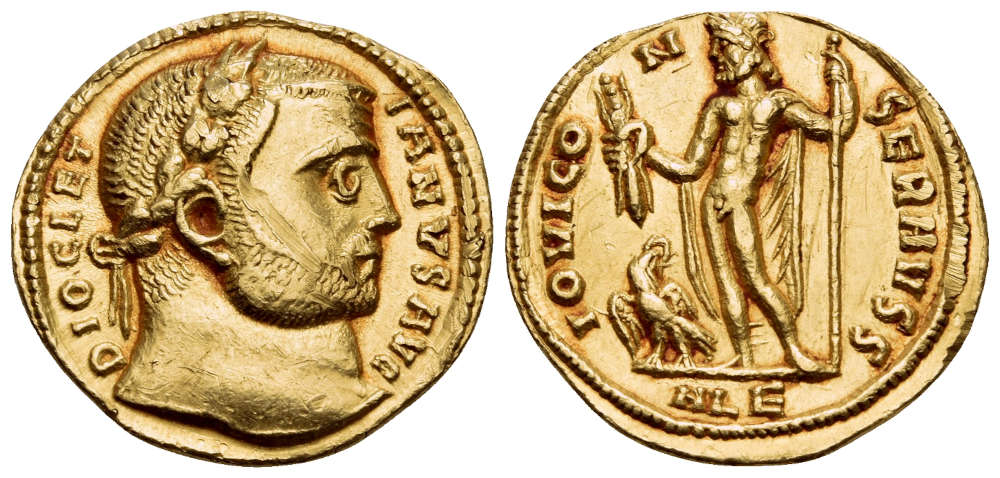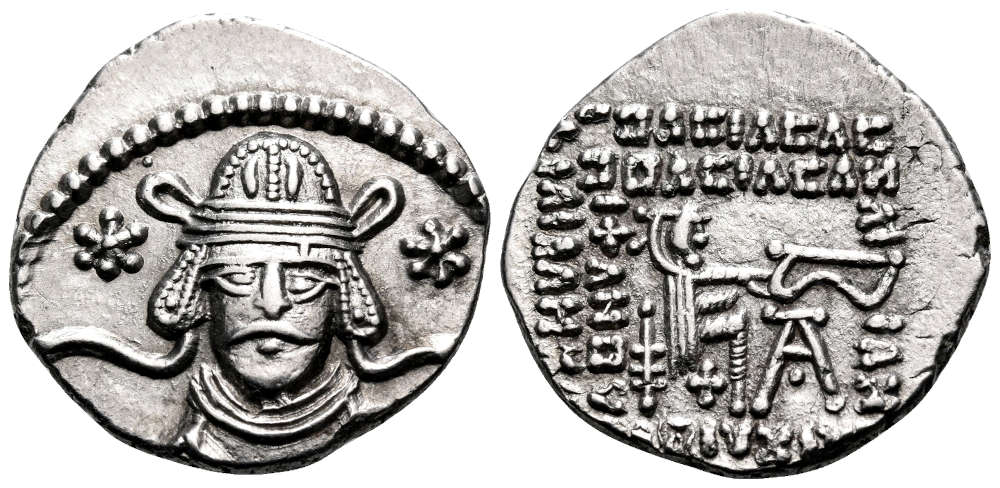Obolos 28
Nomos AG
Obolos 28
2 July 2023
Coins
Online
By Johannes Stelzhammer
Our American friends often point out that we Europeans spend too much time on holidays – being out of the office for almost the entire summer (an outrageous exaggeration!). To prove those critics wrong we have been working hard – while the sun was shining outside – to compile an interesting obolos, only a few weeks after the successful run of our nomos 26/27/28 auctions.
As usually, we have selected interesting, rare and beautiful coins, ranging from the Celtic to the modern world. In a time of ever-rising market prices for (ancient) coins, we have made an effort to assemble 820 lots of fair priced coins for the coin-collecting community. Enjoy!
obolos 28 will close on the 2nd of July 2023, starting at 14:00 CEST live on our webpage.

Lot 88: Macedon, Chalkidian League. Olynthos. Circa 420-417 BC. Tetradrachm. Laureate head of Apollo to left. Rev. Χ-Α-Λ/ΚΙΔ/ΕΩΝ Kithara with seven strings. Reverse die unlisted in Robinson & Clement. Nearly extremely fine. Starting Price: 1000 CHF.
- Lot 88: This silver Tetradrachm was struck in Olynthos for the Chalkidian League in circa 420-417 BC. It features a stunning rendering of Apollo on the obverse and one of the main attributes of this god, a kithara, on the reverse. However, it is not just a very appealing coin from dies of fine style, it is also of some numismatic importance as the reverse die is not listed in the bible of Olynthian coinage – Robinson’s & Clement’s The Chalcidic Mint and the Excavation Coins found in 1928-1934!

Lot 689: Diocletian, 284-305. Aureus, Alexandria, 298. DIOCLET-IANVS AVG Laureate head of Diocletian to right. Rev. IOVI CO-N-SERAVSS / ALE Jupiter standing left, holding thunderbolt in right hand and scepter in left; at feet to left, eagle standing left, head right, holding wreath in beak. Scratch on the obverse, otherwise, extremely fine. Starting Price: 1500 CHF.
- Lot 689: Diocletian, the godfather of the Tetrarchy and notorious persecutor of Christians, had this spectacular gold Aureus minted in Alexandria in 298 AD. In the system of the Tetrarchy two Augusti and two Caesars ruled jointly, with Jupiter – as depicted magnificently on the reverse of our specimen – being associated with the senior rulers, while the junior Caesars referred to Hercules as their protective deity. While we have been struggling with inflation over the last two years, the Roman Empire was hit even harder around the year 300 AD – triggering Diocletian to issue his Edict on Maximum Prices. Just as so many other well-intended political market interventions ever since, the Edict was rather unsuccessful. Nevertheless, Diocletian was certainly one of the most influential Roman emperors. Unfortunately, somebody was rather careless in handling this coin in antiquity, resulting in a substantial, but surprisingly unobtrusive mark on the obverse.

Lot 369: Kings of Parthia. Meherdates, Usurper, 49-50. Drachm, Ekbatana. Facing bust of Meherdates, wearing tiara; in the fields to left and right, star of six points. Rev. Debased legend Archer (Arsakes I) seated right on throne, holding bow; below bow, monogram. Good very fine. From the Eudoxos collection. Starting Price: 100 CHF.
- Lot 369: The Kingdom of Parthia was a rather stable realm. However, exceptions confirm the rule! In 49-50 AD Meherdates, whose impressive facing portrait can be seen on the obverse of this silver Drachm from Ekbatana, competed with the rightful ruler Gotarzes II for kingship. Eventually he was defeated. While his life was spared, the usurper’s ears were mutilated, which disqualified him from ever inheriting the throne. The tradition of mutilating members of the ruling family to bar them from the top job was later adopted by the Byzantine Empire.





